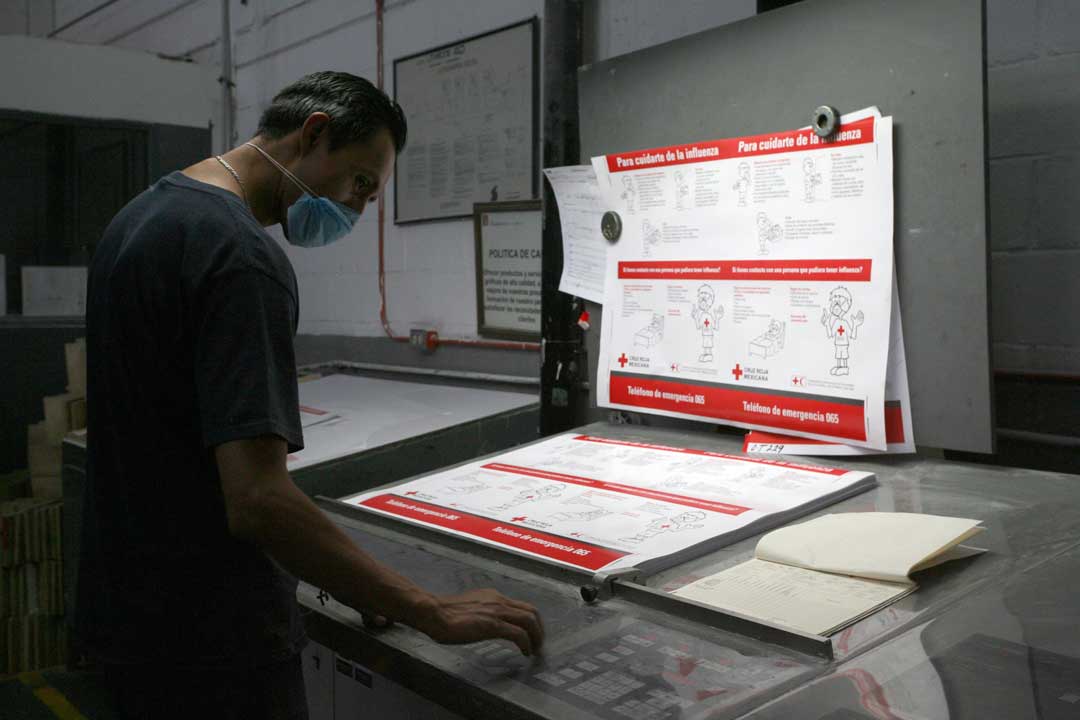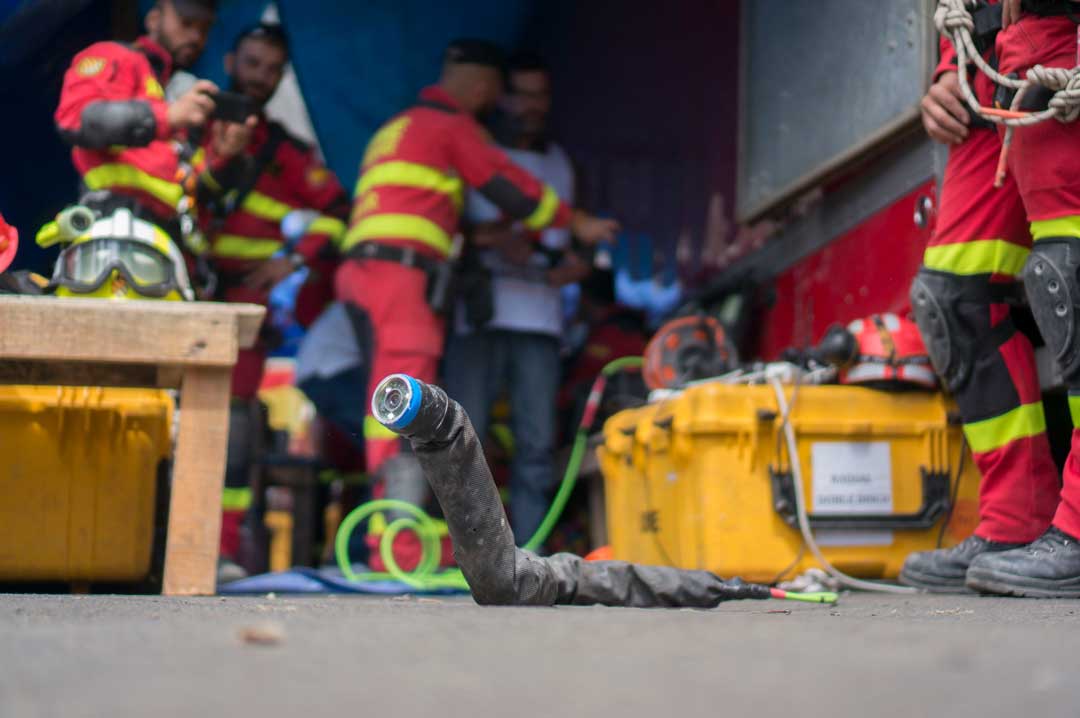
Volunteering is not only critical to the organisational model, affording a direct and intimate link with communities all over the world and enabling social, development and humanitarian action on a scale that would be impossible otherwise, but volunteering itself can, if managed well, deliver enormous benefits for individuals, of social inclusion, building self-confidence, skills and promoting social engagement enabling a more active, enlightened and compassionate citizenry.
Of course the discussion is about more than numbers. The Global Review on Volunteering, the work of the Global Volunteering Alliance and the consultations for the Strategy 2030 all reveal a complicated panoply of issues emerging or persisting with volunteerism; people appear to be volunteering for shorter periods of time, in some parts of the world our volunteers face very real threats to their life and wellbeing, and there are some indications that at local and national levels our volunteering base may not be diverse enough to represent the communities they are supporting.
Strategy 2030 research has also shone a spotlight on rapidly changing trends that are impacting volunteering and that will need to be confronted if the organisation is to remain enriched and powered by the volunteer spirit throughout the 21st century. Below are five key issues that may be central to our efforts to strengthen volunteering in the coming decade. This comes with the caveat though that there is no singular picture of volunteering; motivations behind volunteering are extremely diverse and the social, economic and political contexts within which volunteering shapes are also extremely diverse and influence different characteristics and manifestations of volunteerism. As such, at a global level there is no panacea here to illuminate, nonetheless the following should give us some food for thought;

1) Glocalisation
Volunteering has until very recent times been a largely local activity (with the exception of the minority who are resourced well enough to travel to volunteer). Indeed part of its power is that at scale all over the world people are taking action voluntarily, to address the issues that confront them in their local environment. These local volunteers are often perfectly placed to respond; they intimately understand the complexities of the problems, they know the language, culture and customs and they have a personal motivation beyond that of others not directly connected to the community. However many of the greatest challenges facing humanity today are global and regional in nature; climate change, inequality, migration among them. Technology and the increasing mobility of people has also made it possible for many to take action beyond that of their immediate community or neighbourhood of origin. We see older people in retirement homes in the US educating young people in Brazil via Skype, volunteer doctors in the UK advising medical professionals in Afghanistan on accidents and other emergencies, online mappers volunteering all over the world to chart unmapped communities and, refugees volunteering in camps or in foreign countries to improve the lives of their peers. If the challenges facing us are increasingly global then it makes sense that the responses must also include global action, particularly in a time where global governance appears to be failing us.
The model of the Red Cross and Red Crescent as an auxiliary to national governments can enable great local impact, and this must continue, however it can at times stifle the creativity of exploring new approaches to cross border participation and breaking free of the ‘national fortressing’. It is a phenomenal network of volunteers across 191 countries, but at present they are largely unconnected and do not work together. In the coming decade this will need to change, it is an untapped potential and reservoir of opportunities that could bring tremendous innovation in facing our common challenges. The organisation will need to ambidextrously support both large scale local voluntary action and interconnected regional and global action.
2) Technology and distributed networks
Technology is shifting the landscape of virtually all human endeavours and volunteering is no exception. Advances in robotics and other fields will increasingly bring machines to the fore enhancing or replacing roles previous done by staff and volunteers; Mexican Red Cross used a robotic snake to help search for survivors after the recent earthquake, drones provide rapid assessments for disaster responses, and machine learning in togo helps to inform early action responses to floods. But technological advances have also connected people in ways never previously possible, the potential that can emerge from this are boundless but the organisation will need to open up to the innovation of volunteers connected through distributed networks and not controlled by central mechanisms. This will require a risk appetite and a new support role for the organisation. Some National Societies have experimented with this shift but it is still not yet scaling.

3) Opening up to greater diversity
While at a Global level the Red Cross and Red Crescent has perhaps the most diverse volunteering base in the world, many National Societies have identified a need for improvement at national and local levels. There is a risk that volunteering with all its requirements and complexities and focus on ensuring that it must be done without remuneration can be more accessible to those in positions where they can afford to participate. The risk is that volunteering is gentrified.
For many people emanating from the communities we work with, volunteering can be challenging to engage with, including particularly women. More sophisticated provisions for support may need to be arranged to enable those with childcare burdens or for whom livelihoods is a struggle and pressing priority. The concept of volunteerism being provided for free may have to be challenged, stipends, childcare support and livelihoods support may have to make up the suite of supports offered. While for some the notion of ‘paying’ volunteers may appear anathema it is in fact a relatively common practice across the network and beyond, and indeed even in the commentaries of the Fundamental Principles, Pictet identifies it as only a secondary concern, the Voluntary Service principle being more interested in the concept of people coming of free will to support humanitarian causes and the spirit that this brings, rather than whether or not they are paid.
Other efforts at diversity will have to be targeted including bespoke strategies to reach out to minority groups, women and people living with disabilities, all of which will require changes to our models, communications and infrastructure. In many countries there is a rapidly ageing population that can offer tremendous and skilled support, conversely there is right now, the largest number of young people coming up that the world has ever seen. New and creative ways to support and mobilise youth will be essential particularly across Asia and Africa where most of the youth bulge resides. Some studies indicate that youth are more passionate about and involved in social causes than any generation before them. How do we engage with them to support our common causes?

4) “The Bureaucracy is Expanding to meet the needs of the expanding Bureaucracy” –Oscar Wilde
The vast majority of volunteering globally is done outside of formal institutions. Enabled by technological advances and social media the potency of self-organising activism and volunteering has magnified in recent years. These ‘Movements’ are often fast, flatter in structure, dynamic and highly impactful and effective. Recent self-organised responses to disasters in Mexico, the US, New Zealand and others have provided effective response services and have moved with an agility that most organisations are incapable of.
In recent years the Red Cross and Red Crescent has been grappling with how to engage with these self-organised Movements, Australian Red Cross for instance, has listed as its target that it wants 50% of its support for volunteers to be for these self-organising groups. Red Cross and Red Crescent volunteering models to date though have largely been top heavy, bureaucratic and steeped in process and procedure that stifle creativity and overburden any effort to engage with these horizontal and agile networks.
While some of this process and bureaucracy is necessary in managing services with vulnerable communities, the organisation will need to grapple with how to ensure that communities and volunteers remain safe through their engagement with us, while at the same time opening up to more rapid, networked, decentralised and self-driven volunteering models. There is a significant shift in model here, virtually all of the Red Cross and Red Crescent’s volunteering has been about recruiting volunteers to deliver pre-designed services, and while this element will remain necessary, increasingly change will come from supporting people to make the impact that they want to see in the world and providing the resources and support to do so.
For those volunteers who do want to participate in existing services, their increasingly busy and complex lives mean that there will be little time for induction processes that stretch for months and for models that require heavy engagement to deliver. The shifting social trends impacting people will likely mean that services that include volunteerism will have to take on different shapes and forms to accommodate volunteering needs.
Final Thoughts
The Voluntary spirit has been at the heart of the ethos of the Red Cross and Red Crescent for more than 150 years. The world is transforming though and along with it the Red Cross and Red Crescent will have to transform also. If the network is to truly remain a ‘Movement’ it must be able to mobilise millions of people in support of a cause. Is it clear what the ‘cause’ is? We will need to better understand and communicate exactly what it is we are asking people to coalesce in support of. A Movement without a clear cause and call for change, is not a Movement.
This will require a re-framing and re-imagining of what voluntary action is in the 21st century and how change can be affected through grassroots action. Given the long and innovative history of the organisation and its unparalleled volunteer base, there is perhaps no better organisation to lead the way on transformation and mobilising for good.
Legend.
🙂
Excelentes reflexiones, aunque creo que cuando hablamos de apertura a una mayor diversidad, debería incluirse y mencionarse esas diversidades, lo que no se nombra no existe, por ejemplo incluir la diversidad sexual, mencionando a sus colectivos Gays, Lesbianas, Trans, Bisexuales, Queer e Intersex, por ejemplo incluyendo a las personas usuarias de sustancias psicoactivas, por ejemplo incluyendo a las personas con VIH, incluir a las personas migrantes etc. Son todos colectivos que son parte de nuestras acciones, son con quienes trabajamos a diario para atenuar el sufrimiento y por ende deben ser parte de nuestra organización, si realmente asumimos el compromiso de la integración y la diversidad y realmente aspiramos a un trabajo entre pares.
Saludos cordiales
Thanks for your comments Jose and I completely agree with you. We must promote diversity in all its forms and make active efforts at inclusion. Thanks again,
1) Platform for volunteers to voice out/share innovation or case or model is always important and attract new ideas to bureaucracy
2) Mission alignment: leaders of organization may get used to allocate routine tasks to volunteers but those who care the volunteers will be eager to put time to make mission alignment. Finally those will gather or inspire more to make commitment
3) Pre-design services can provide clear scope of services to service target, ensure safety to volunteers but at the same time, executor may forget the cultural differences/community engagement. Finally success of services depends on community engagement but not the technology/ resources provision to service target
Thanks for these additions Sam, I am particularly supportive of your first point – there is tremendous potential to draw out the innovation of our volunteers and explore new approaches and new ways of working, if we are open to it. We will need a range of strategies to encourage these innovations and be open to the disruptions and risks that may be inherent with them. I would love to hear of more examples from around the network.
Financial developments and fiscal budget deficits in developed countries are very likely not sustainable which might lead to years of global economic hardship in the coming decade. The role of humanitarian movements will become more relevant and needy but at the worst possible time because of funding scarcity. The Red Cross and Red Crescent movement must rely more on volunteering work to carry out its mission. It will be very easy to spot vulnerable people but relatively more difficult to help and support them through the hard time. The Red Cross and Red Crescent must strive to establish its position as the world’s major humanitarian movement through effective use of volunteers and latest technology to minimize the costs pertaining to on-site operations as well as administrative overheads.
Thanks Teeraboon and some good points here, part of the picture is also going to be about finding new and creative ways to finance our work. This is an issue that was also raised a lot in the consultations and there is information on new forms of financing on this website
One thing we found here in Dhaka is that, the “Movement” achieved a lot to save lives, but we struggled to change minds to move forward and to overcome the challenges we are facing everyday.
New thinking is not enough if we don’t implement. Implementation is not enough if its doesn’t change the situation. Thus, having right capacity is crucial for organising this driving the change.
It is equally applicable for volunteerism and volunteering in 21st century. We need doer with right capacity to deliver at all level.
Thanks Razwan and agree, to achieve this I think we are going to need to open up our volunteering approaches to a much wider portion of the population. This will require rethinking how we support volunteers and those in society who want to drive positive change
particularly supportive of your first point – there is tremendous potential to draw out the innovation of our volunteers and explore new approaches and new ways of working, if we are open to it. We will need a range of strategies to encourage these innovations and be open to the disruptions and risks that may be inherent with them. I would love to hear of more examples from around the network.
Agree completely Shujaa, we need to put more effort into the innovation of the ‘crowd’. we have so many talented people working and volunteering with us we only need to be more open to their ideas and initiatives, this requires more risk tolerance and a culture that supports experimenting with new ideas and accepting that not all of them will work 🙂
Excited to see your article. The role of RCRC in promoting and Maintaining Volunteering is legendary. I am promoting a small volunteer effort VERVE Volunteers established by the MARS Practitioners network with focus in two countries, Myanmar and India. Lets keep in touch. I will write a response soon
Volunteers are important bridge between the organization and community in order to create more development in the societies should to create the better ways which most peoples influenced to engage in volunteerism by strong way of provision of education and materials supportive depending on the need of place by done it together we practice bettrer.